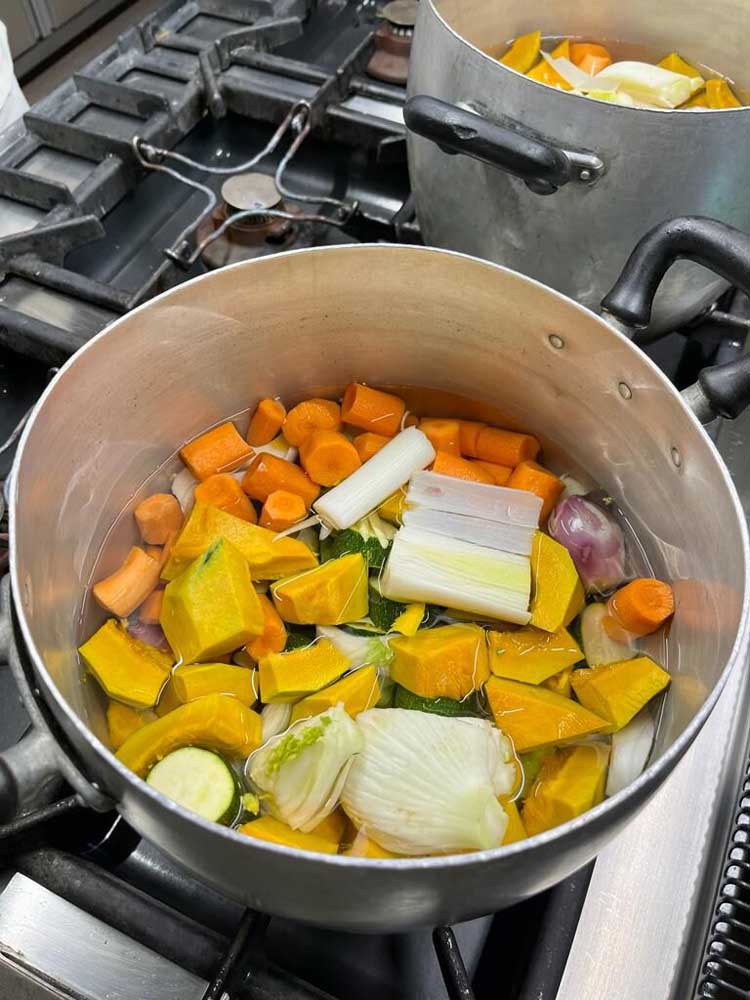not for web
Published 9:00 pm Monday, January 22, 2024

- Vegetables being prepped for lunch that included vegetable soup in the first course for an Italian school lunch.
Each day on our short walk to our town’s scuola materna, my son and I stroll past tiny yards brimming with tomato plants, squashes and citrus trees. A vine of kiwis adorns the entry to one neighbor’s home, and rows of olive trees dot a hillside nearby. Juicy cantaloupes in summer, ripe figs in fall — these are but a few of the mouthwatering choices my son enjoys every day at his Italian preschool.
In the six months since we moved to Italy on military assignment, I’ve been shocked at how well Italy feeds its schoolchildren compared with the United States.
Trending
American school lunchrooms prioritize convenience over quality. Though the Biden administration’s recent revamp of school nutrition guidelines cuts down on the sugar and sodium, ultra-processed foods remain in the mix. Italy has designed its school lunches with health and sustainability in mind.
Here’s what that means in practice: Students in many Italian preschools eat from a set menu, with no outside food allowed — so no bag lunches. Some schools, including my son’s, prepare lunch in-house; others cater food from off-site kitchens. In either case, the children enjoy a healthy meal — Italian law restricts public schools from serving fried foods.
In particular, my son loves when his school serves passato di verdure con pastina, a popular pasta dish brightened by a sauce made from freshly cooked winter vegetables.
And these are multicourse meals. A typical lunch in an Italian public school consists of a first course, a second course and a side. Meals are prepared with simple cooking methods to preserve nutritional value. Instead of corn dogs, french fries or potato chips, little Italian learners nosh on cod Vicentina with polenta, raw seasonal vegetables and creamed carrots with rice.
My son’s palate continues to expand with seasonal foods on rotation. One day, baked rabbit roll followed parmesan risotto with steamed spinach as an accompanying side.
That might sound a little refined for a 5-year-old, but there is an educational purpose at work. Early exposure to varied foods allows Italian children to develop diverse palates and drives healthy, lifelong eating habits. The Mediterranean diet, linked to lower risk of heart disease, Alzheimer’s disease, cancer and Type 2 diabetes, is one of the healthiest in the world.
Trending
Italy isn’t unique in its approach to school nutrition. A fellow military spouse who lived abroad informed me that Korean preschools and kindergartens cook fresh food on-site. From Estonia to Poland to the Netherlands, others in my circle noticed a significant difference between the food served in international schools and in American schools.
So what’s the upshot? Italy still has one of the highest rates of childhood obesity in Europe. A recent study shows that only 5% of Italian primary schoolchildren have a “good adherence” to the Mediterranean diet outside the classroom.
Does that mean those healthy preschool lunches are wasted effort? I don’t think so. Italy maintains a significantly lower rate of adult obesity than the United States — about 40% of American adults are obese compared with just 12% of Italians.
It’s not far-fetched to think that early exposure to a nutritious diet could play a role. Healthy eating habits learned as children are linked to a lower chance of obesity in adulthood. Something good is clearly happening as Italians mature.
As a military mom, I want my child — along with every American kid — to boast wholesome diets that help them grow up strong and maintain healthy habits for life. Italy’s healthy and delicious school lunches are setting children up for success — the United States might want to take a page out of their recipe book.








